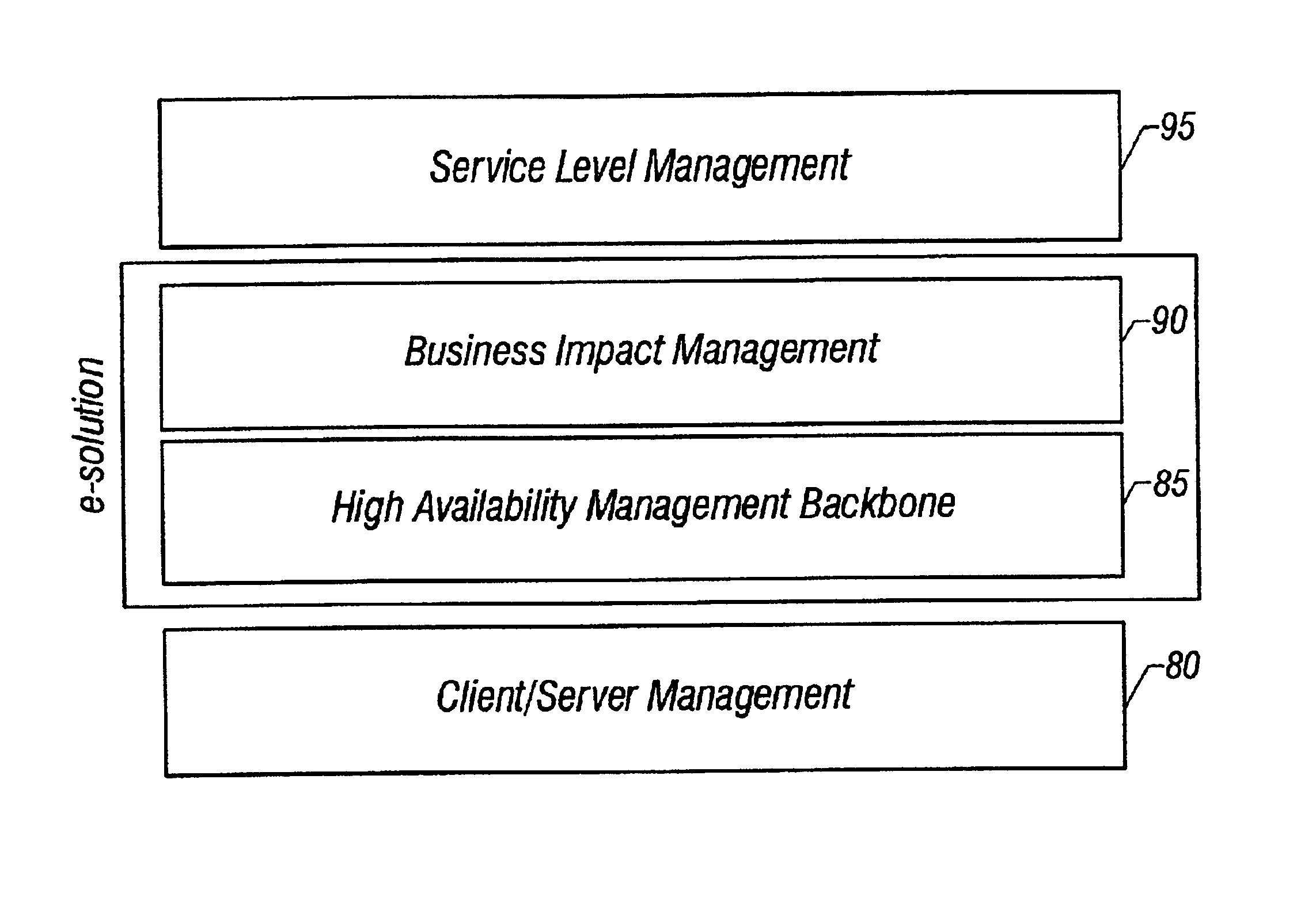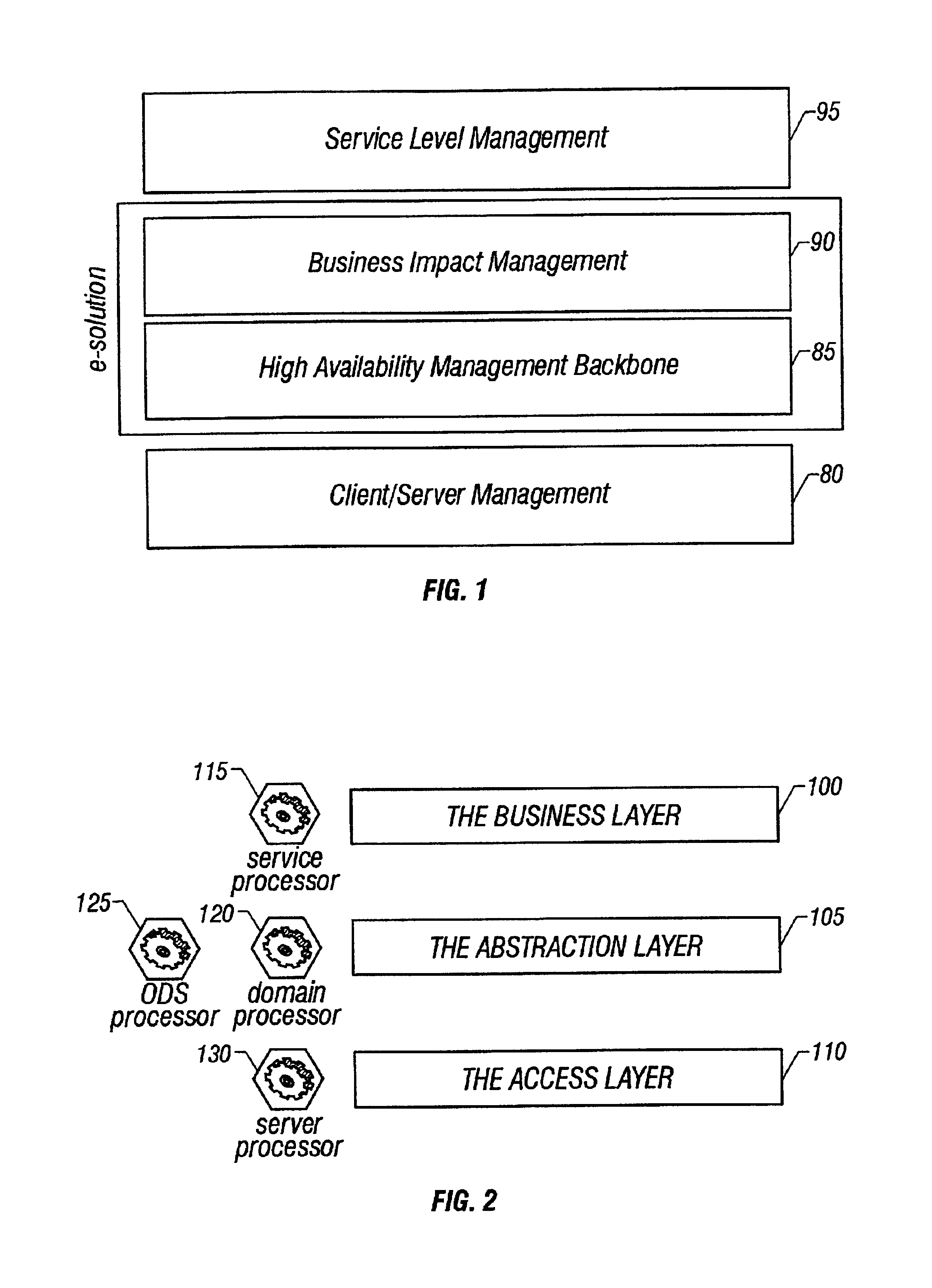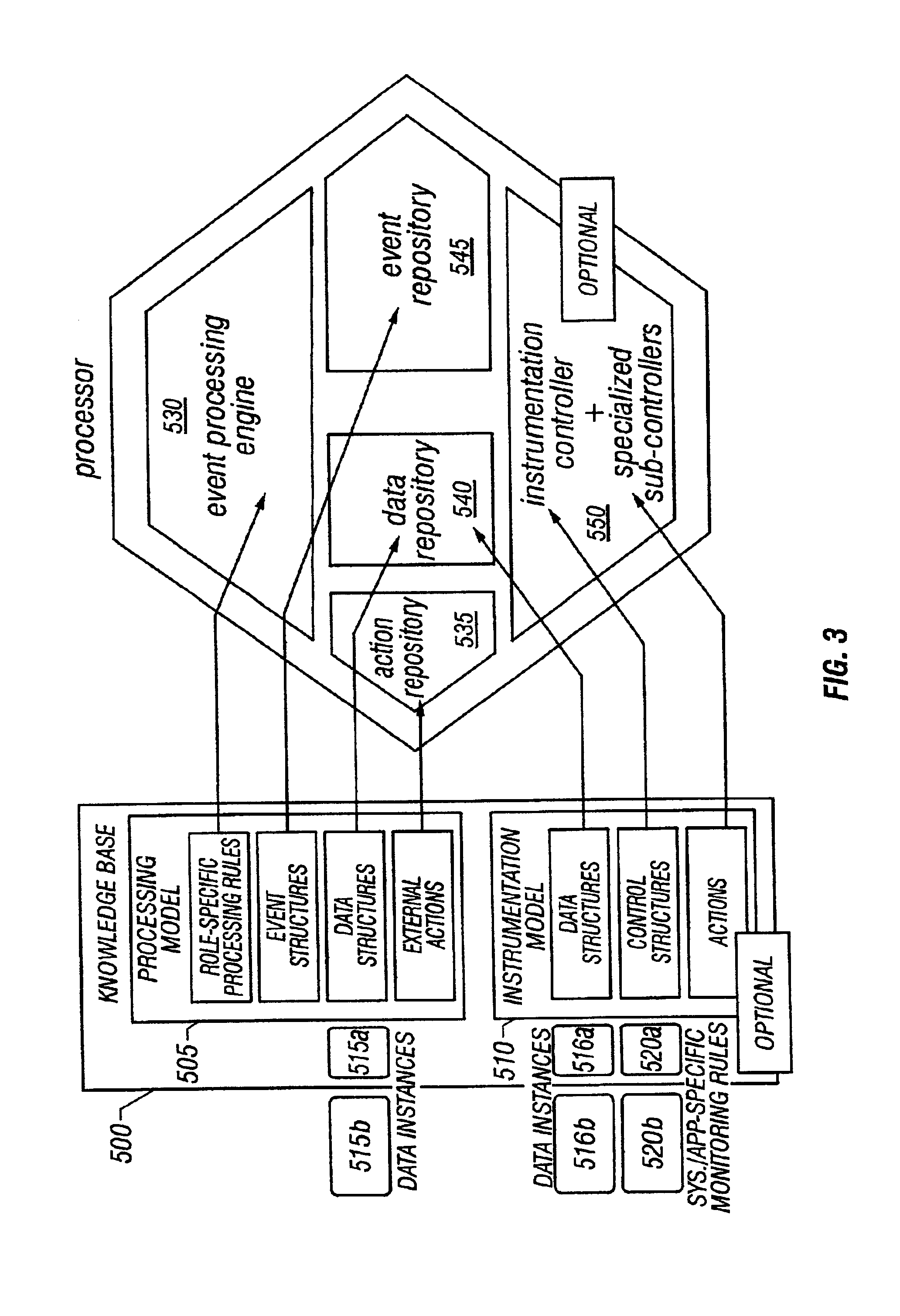System and method of enterprise systems and business impact management
a business impact management and enterprise system technology, applied in the field of availability management and performance management disciplines, can solve the problems of inability to predict the many failures, the loss of information, and the complexity of more mission-critical applications, so as to avoid a lot of costs and achieve faster and more accurate analysis.
- Summary
- Abstract
- Description
- Claims
- Application Information
AI Technical Summary
Benefits of technology
Problems solved by technology
Method used
Image
Examples
Embodiment Construction
[0062]As shown in FIG. 1, a Business Impact Management 90 and High Availability Management Backbone 85 are positioned between Client / Server Management 80, as the actual outcome of ESM legacy monitoring tools, and Service Level Management 95, as the ultimate target of today's companies. The implementation of a High Availability Management Backbone 85 may be regarded as a preliminary step for the deployment of a Business Impact Management solution.
[0063]As depicted herein, FIG. 2 shows a three-layer functional architecture which supports the concept of High Availability Management Backbone 85 with: a high-end Business Layer 100 implementing one or several peer-to-peer processors configured to run as service processors 115; an intermediate Abstraction Layer 105 implementing one or several peer-to-peer processors configured to run as domain processors 120 or as Object Directory Services (ODS) processors 125; and a low-end Access Layer 110 implementing an active network of peer-to-peer p...
PUM
 Login to View More
Login to View More Abstract
Description
Claims
Application Information
 Login to View More
Login to View More - R&D
- Intellectual Property
- Life Sciences
- Materials
- Tech Scout
- Unparalleled Data Quality
- Higher Quality Content
- 60% Fewer Hallucinations
Browse by: Latest US Patents, China's latest patents, Technical Efficacy Thesaurus, Application Domain, Technology Topic, Popular Technical Reports.
© 2025 PatSnap. All rights reserved.Legal|Privacy policy|Modern Slavery Act Transparency Statement|Sitemap|About US| Contact US: help@patsnap.com



